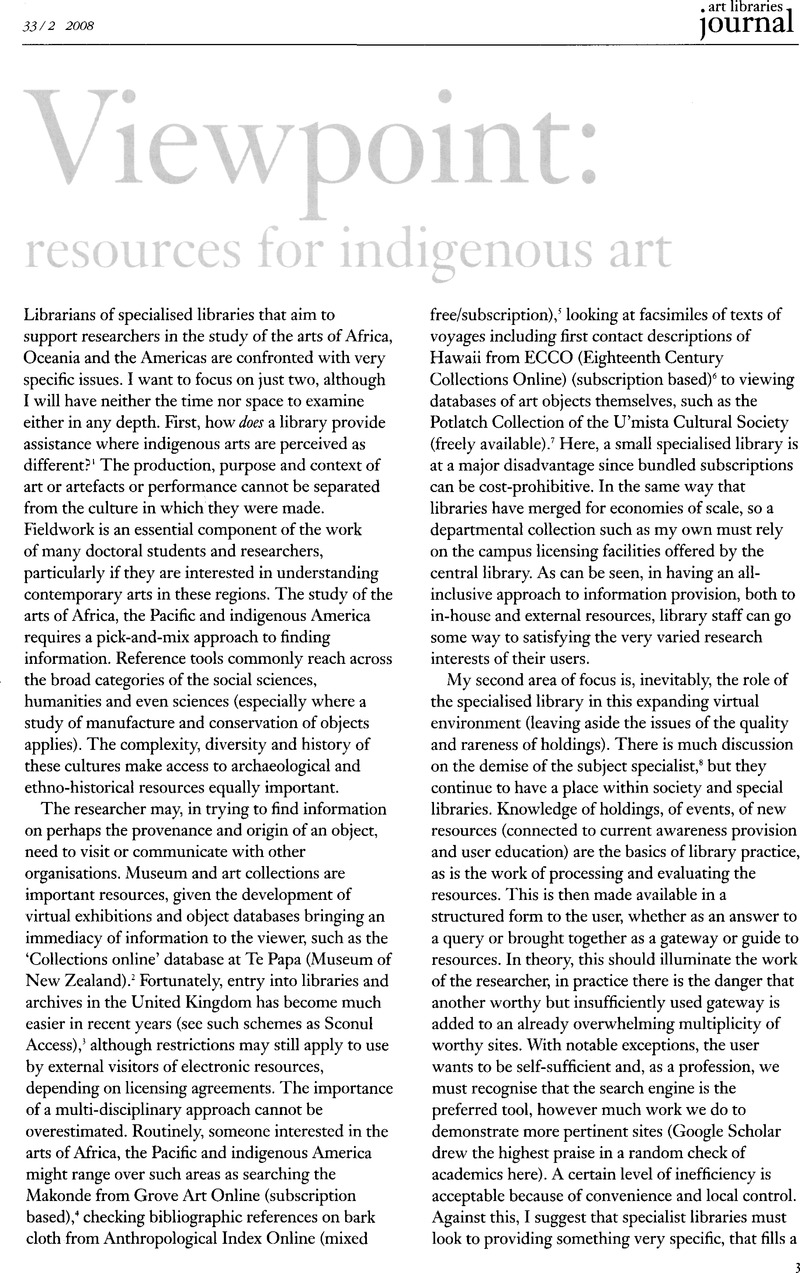10. Wider in scope than the visual arts, the IFLA (International Federation of Library Associations and Institutions) statement on Indigenous Traditional Knowledge is of note. It seeks to broaden what is often a negative debate on issues of access and control of knowledge, to one of local empowerment and development of mutual respect between a researcher and the indigenous community. In particular see the bullet point that recommends that libraries and archives ‘Publicize the value, contribution, and importance of indigenous and local traditional knowledge to both non-indigenous and indigenous peoples’,
http://www.ifla.org/III/eb/sitk03.html. For a local viewpoint on this issue, again broadly based but relevant to the visual arts, see Vilimaina Vakaciwa, ‘Preserving and managing traditional knowledge of the Pacific: what we know and what we can do?’ in
PIALA 2004 14th annual conference proceedings; and PIALA 2005 15th annual conference proceedings: selected papers from the 14th and 15th Pacific Islands Association of Libraries and Archives annual conferences, ed. by
Cohen, Arlen (
Guam:
Pacific Islands Association of Libraries and Archives,
2006),
http://www.uog.edu/rfk/piala/proceedings/PIALA2004-05.pdf. For an example in practice, see the Australian Institute of Aboriginal and Torres Islander Studies (AIATSIS) which has established rigorous guidelines regarding research which informs use of the library and archives,
http://www.aiatsis.gov.au/library/.
Google Scholar 